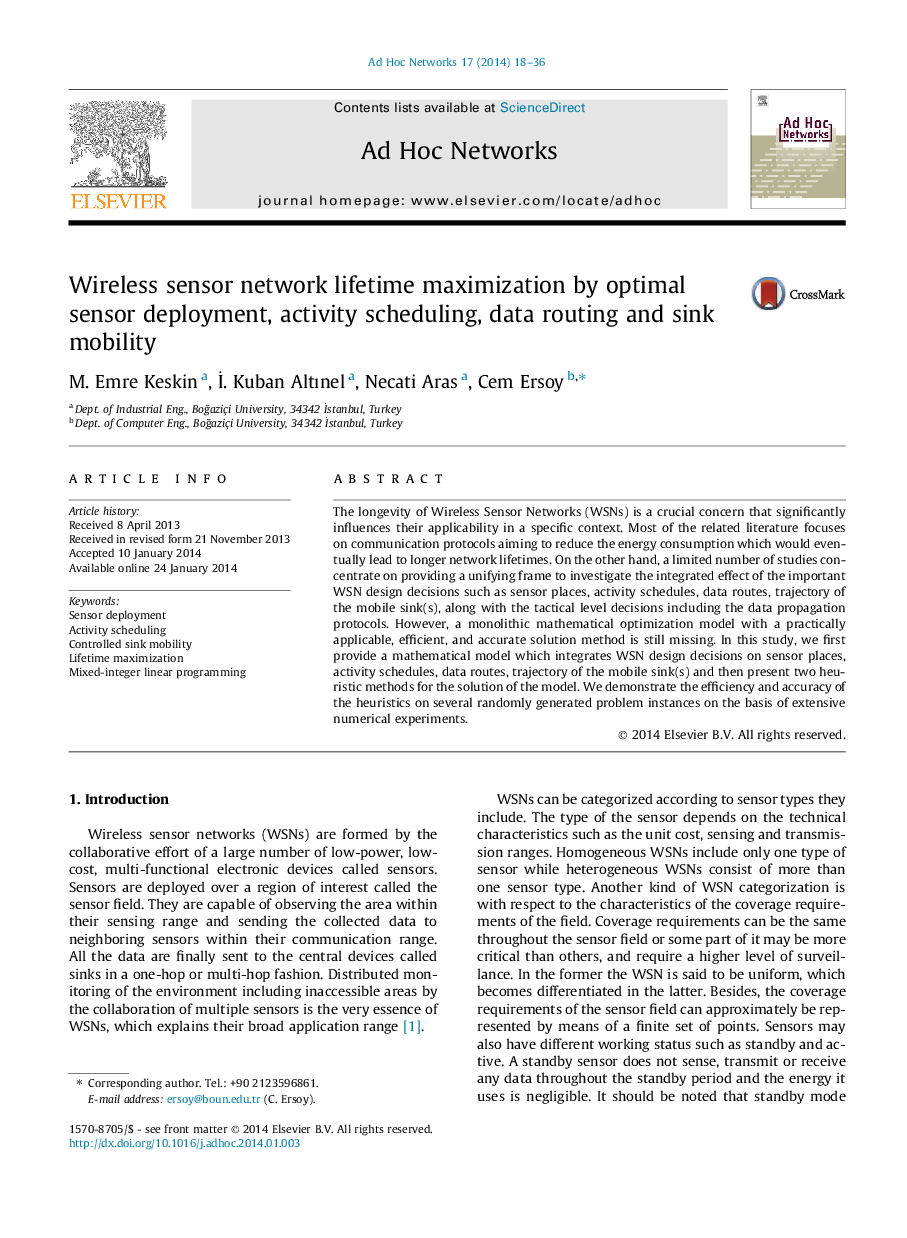| Article ID | Journal | Published Year | Pages | File Type |
|---|---|---|---|---|
| 444450 | Ad Hoc Networks | 2014 | 19 Pages |
The longevity of Wireless Sensor Networks (WSNs) is a crucial concern that significantly influences their applicability in a specific context. Most of the related literature focuses on communication protocols aiming to reduce the energy consumption which would eventually lead to longer network lifetimes. On the other hand, a limited number of studies concentrate on providing a unifying frame to investigate the integrated effect of the important WSN design decisions such as sensor places, activity schedules, data routes, trajectory of the mobile sink(s), along with the tactical level decisions including the data propagation protocols. However, a monolithic mathematical optimization model with a practically applicable, efficient, and accurate solution method is still missing. In this study, we first provide a mathematical model which integrates WSN design decisions on sensor places, activity schedules, data routes, trajectory of the mobile sink(s) and then present two heuristic methods for the solution of the model. We demonstrate the efficiency and accuracy of the heuristics on several randomly generated problem instances on the basis of extensive numerical experiments.
